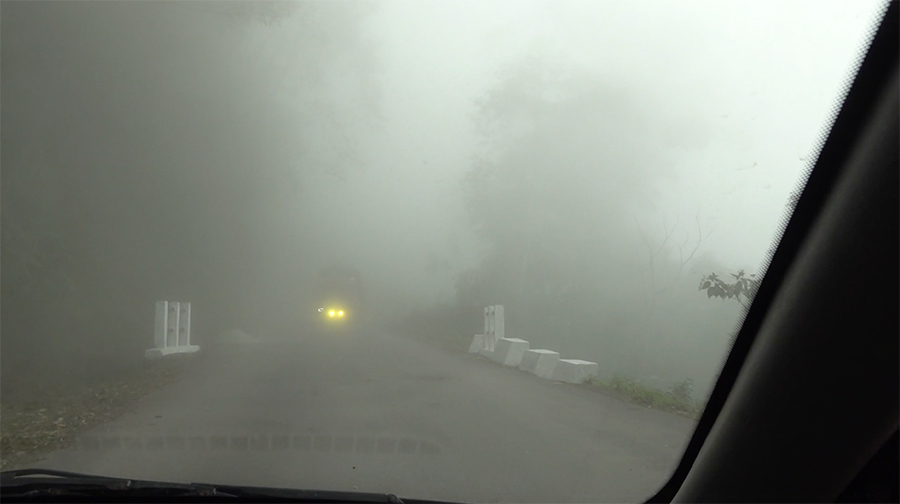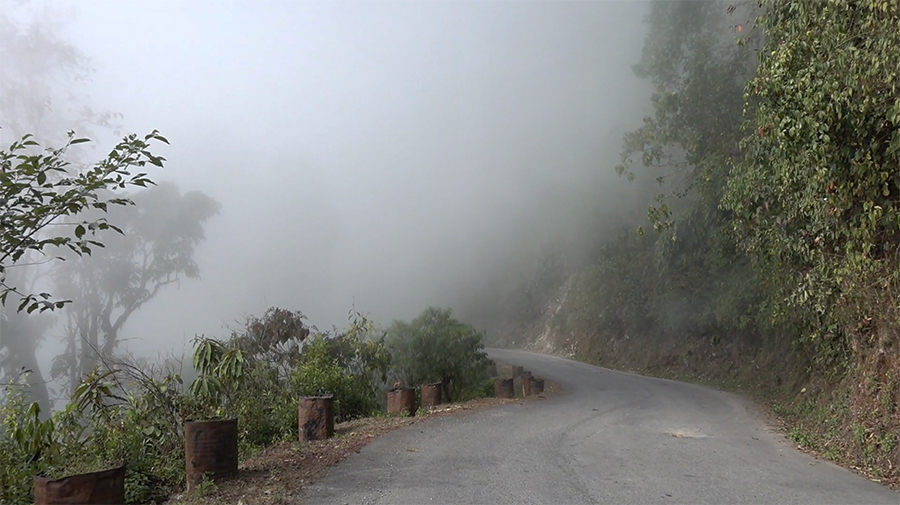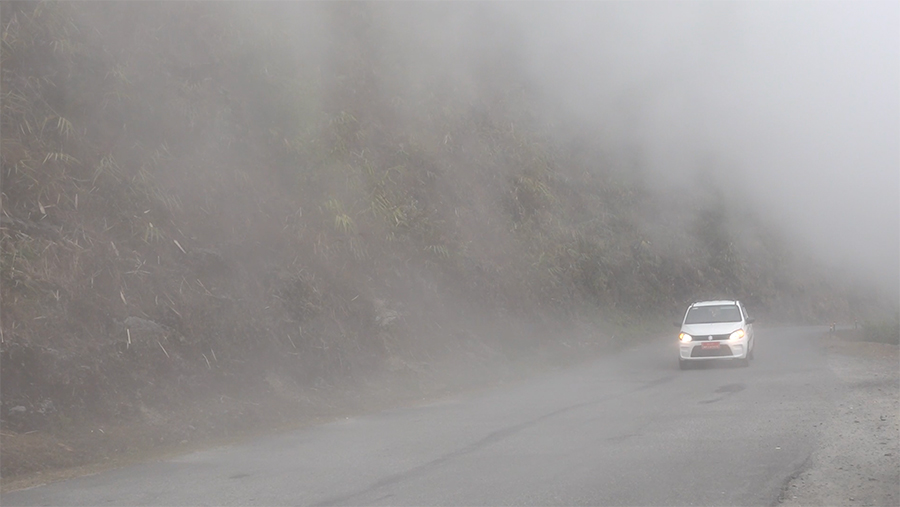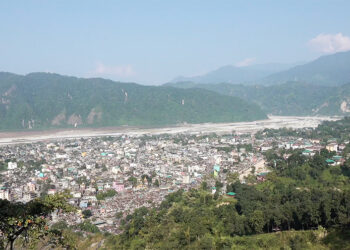 Commuters travelling along the Samtse-Phuentsholing highway are calling on authorities to address pressing safety concerns. Poor visibility caused by fog is frequent, especially during the monsoon season and has made travelling along the newly blacktopped road increasingly dangerous. People say there is a need to install road markings, crash barriers, and traffic signs along the highway.
Commuters travelling along the Samtse-Phuentsholing highway are calling on authorities to address pressing safety concerns. Poor visibility caused by fog is frequent, especially during the monsoon season and has made travelling along the newly blacktopped road increasingly dangerous. People say there is a need to install road markings, crash barriers, and traffic signs along the highway.
 Located at an altitude of approximately 1,500 metres, the Samtse-Phuentshogling national highway, particularly the stretch from Weezergang to Samtse, is often blanketed by thick fog.
Located at an altitude of approximately 1,500 metres, the Samtse-Phuentshogling national highway, particularly the stretch from Weezergang to Samtse, is often blanketed by thick fog.
 This sudden onset of fog, coupled with the absence of road markings, crash barriers and traffic signage, has raised serious safety concerns among travellers.
This sudden onset of fog, coupled with the absence of road markings, crash barriers and traffic signage, has raised serious safety concerns among travellers.
“Driving here is very difficult because thick fog makes it hard to see the road. There are no markings or blinkers to guide us, which makes travelling extremely risky. It would be much safer if these facilities were provided,” said Kezang Lhamo, a resident.
“While travelling from Phuentshogling to Samtse with my mother, we encountered heavy fog along the way, which, combined with the lack of road markings, made the journey very challenging. The risk of accidents is high, and installing lights along the road would greatly improve safety,” said Rigzin Sonam Tenzin, another resident.
“We travel this route daily, and the roads, being in hilly areas, become very difficult to navigate when it’s foggy. The combination of thick fog and the lack of road markings causes delays and often frustrates our passengers. After 5 PM, the fog gets even worse, and there are frequent accidents along this stretch,” said Gautam Sunar, a taxi driver.
Meanwhile, the Royal Bhutan Police in Samtse acknowledged that there have been a few accidents attributed to poor visibility caused by weather conditions. However, they noted that the number of such incidents is not alarming, and no severe accidents have been reported recently.
Acknowledging the concerns, the Department of Surface Transport shared that a proposal for resurfacing the road including the addition of road markings was submitted last year, but could not be implemented due to budget constraints.
However, the Chief Engineer of the Department of Surface Transport stated that they are planning to submit a new budget proposal in the upcoming financial year to fund the construction of crash barriers and the installation of delineators. Meanwhile, the department has implemented temporary safety measures by placing bitumen barrels along the road. These barrels will be painted with synthetic white paint to improve visibility for travellers, particularly during low-light and foggy conditions.
In addition to connecting Samtse with Phuentshogling, the nearly 60-kilometre highway also serves as a vital link between Dorokha Dungkhag and other parts of Samtse. Built in 2006, this internal road accommodates about 350 vehicle movements daily.
Passang Dorji, Samtse
Edited by Yeshi Gyaltshen








